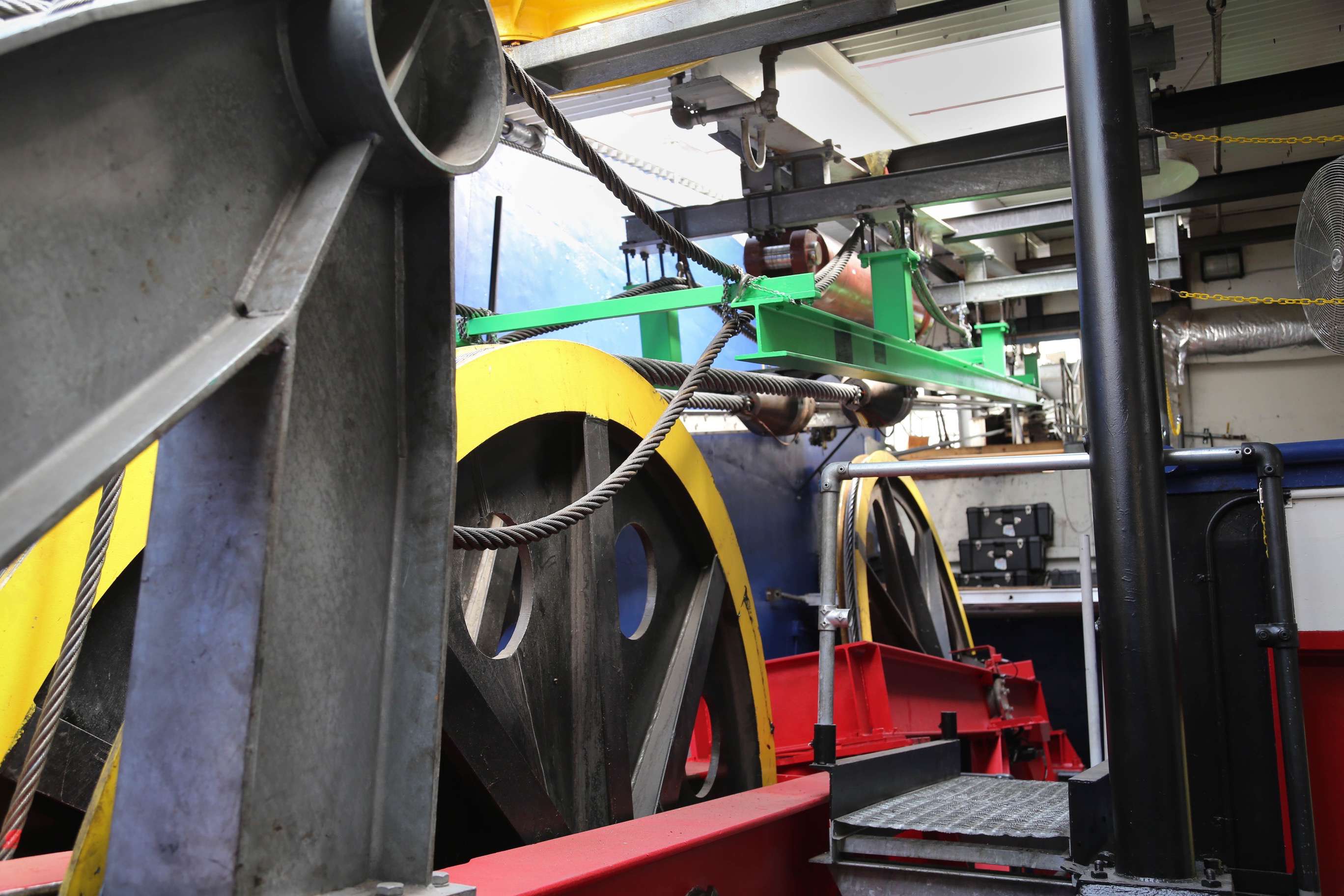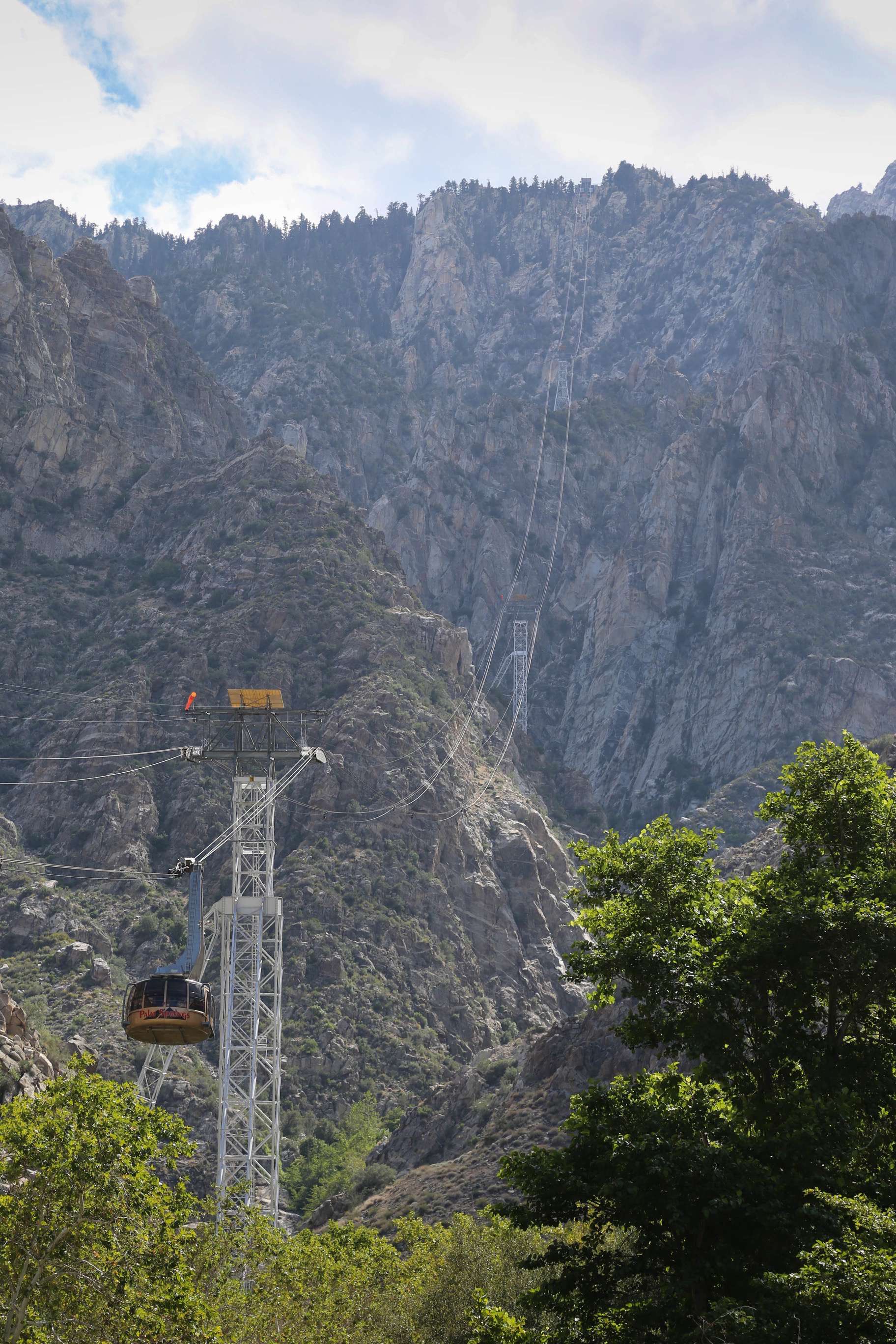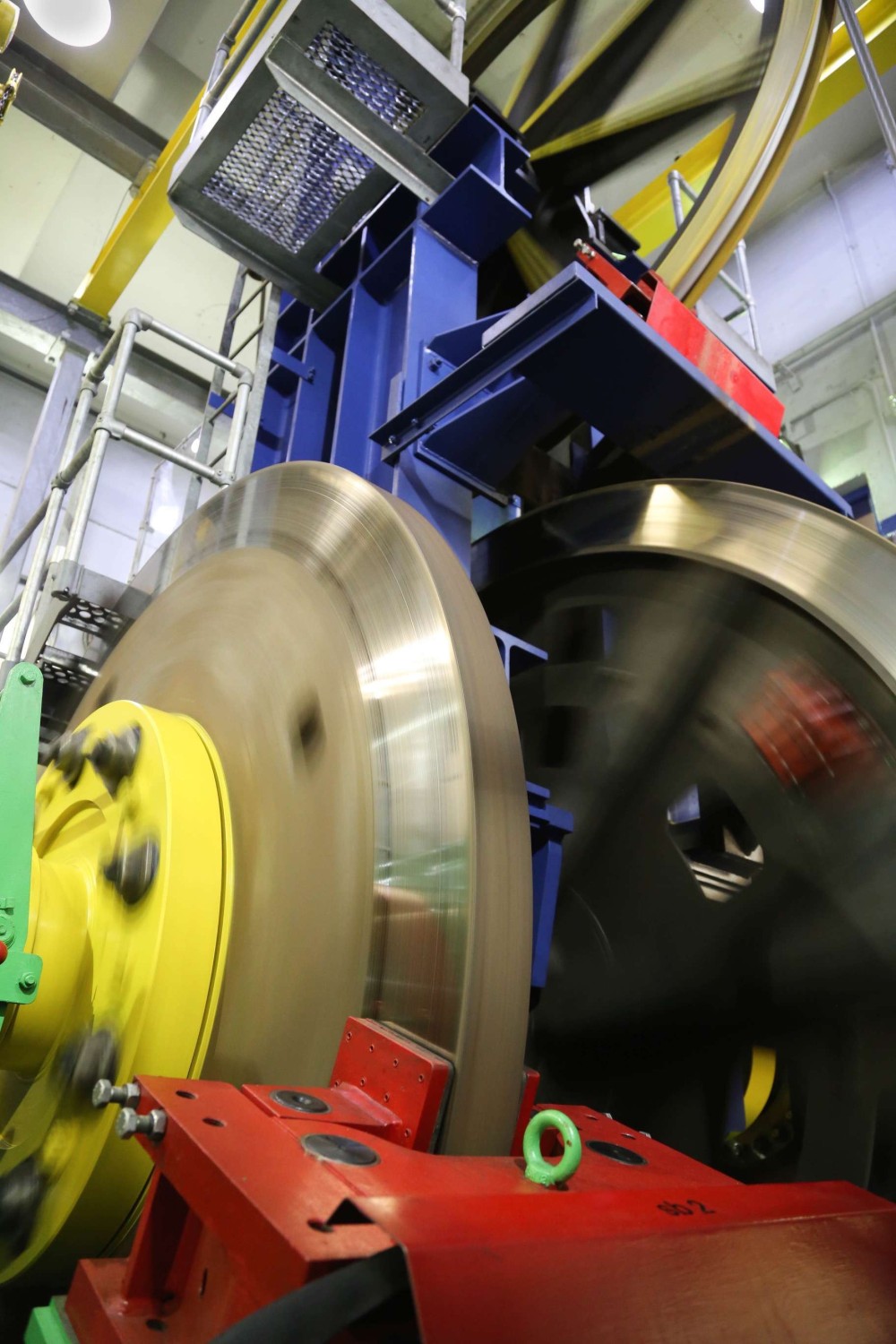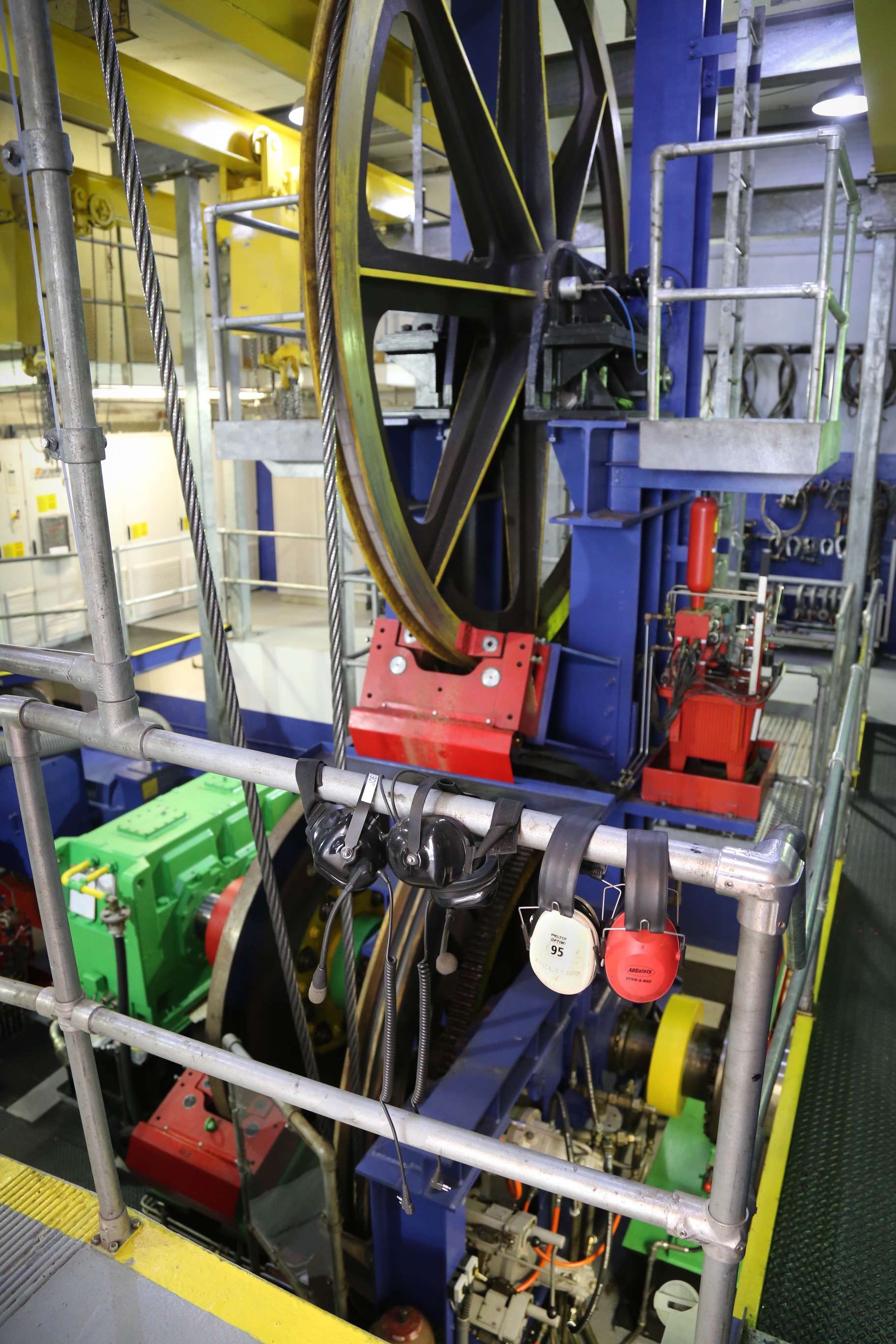
Down below the Coachella Valley is at least 30 degrees hotter, and in Palm Springs, in the summer, that’s hot.
Palm Springs is a popular California getaway, but Coachella Valley temperatures can easily push past 100 degrees Fahrenheit. A great way to beat the heat is to take the aerial tramway to the top of Mt. San Jacinto. The ride is memorable, topside views are breathtaking, and for those wondering just how safe it might be, a peek behind the scenes will allay the fears of even the most worrisome.

One of the round aerial tramway cars sets off to the summit of Mt. San Jacinto. The roadway only goes as far as the first cable tower.
Not surprising, the dream for an aerial tram came about on a hot day in 1935 when Francis F. Crocker looked up at the snow-capped peak of Mt. San Jacinto and longed to be up in the alpine air that is about 30 degrees Fahrenheit cooler on average than Palm Springs.

Today’s modern aerial tramway cars safely support tons of weight. These ‘hangers’ bear the weight of an entire car holding up to 80 people.
Over the decades, Crocker persisted with his dream. In 1945, California’s then-governor Earl Warren signed legislation creating a park authority, funding was arranged through the sale of bonds and land in Chino Canyon was donated that would serve as the headquarters and parking area (2,643 feet above sea level). On September 12, 1963 the Palm Springs Aerial Tramway began offering rides to the public. In the years since its inauguration, nearly 18,000,000 people have enjoyed the ride to the top.
The technical challenges to construct the tramway were considerable and today the project is an historical civil engineering landmark. For example, helicopters flew approximately 23,000 missions during the 26 months of the tramway’s construction. Only the lowest support tower could be accessed by road, but the remaining four support towers were built with materials flown up by helicopters. The Mountain Station at 8,516 feet above sea level also had to have materials and workers taken up by helicopter.

Holding up the massive aerial tramway cars is a high grade steel cable that is more than 1.5 inches in diameter.
In 2000 the facility underwent a face lift and upgrades, and the original rectangular cars that carried people and cargo were replaced. The new cars currently in use are innovative in several respects. They are the world’s largest rotating tramway cars at 18 feet in diameter, and they hold up to 80 passengers at a time. To give visitors a complete view of their surroundings, each car makes two complete rotations during the 10-minute ride (approximately), to the top.

When you reach the top, you are graced with views like this bit of alpine forest. Summer hiking and winter cross country skiing.
The two-mile traverse has a vertical rise of nearly 6,000 feet, making it one of the greatest top-to-bottom rises in the world. The cars are carried on steel cables that are more than 1.5 inches thick. And the technicians inside the car are full of helpful and interesting information about a journey that passes through five biomes beginning in the Sonoran Desert and ending in an alpine forest. But it is what visitors do not normally get to see that is a critical part of the tramway’s operation.

Machinery whirs and spins, hidden from visitors, as they are whisked to and fro, unaware of the complexity of their ride. The massive disk brakes at bottom center are just part of what keeps passengers safe.
Behind closed doors is an impressive system of pulleys, cables, engines, brakes, safety equipment, and back-ups that help ensure visitor safety. In addition to the main motors, there are backup motors to the backup motors that provide a redundant safety system. Technicians regularly monitor the operation, both in the control room as well as from inside the tramway cars. And workers regularly inspect the entire system to make certain all is in proper working order.
Whether you visit in the summer to hike among the 54 miles of trails within the 14,000 acres of Mt. San Jacinto State Park or enjoy cross-country skiing or snowshoe hiking in the winter, there is a restaurant and café for either dining or snacking.

A maintenance supervisor keeps a careful eye on all aspects of the power plant. Right, a back up power system, and behind is the back up to the back up.

Safety for everyone, visitor and workers alike, is a top priority. Safety harnesses are a must for maintenance.

During a moment of lull as the aerial trams wait at their stops, cables and machinery await their next task.
Palm Springs Aerial Tramway is open year-round except for a two-week maintenance period in September.

One of the sheerest mountain faces in North America, and you’re just a few feet away. It’s a great view.
But no matter what time of year you visit, it is well worth the ride.





